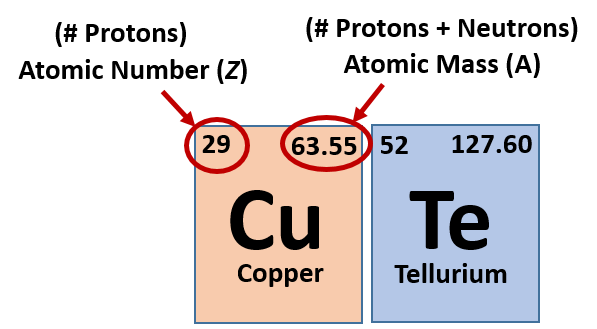

We will encounter many other examples later in this text. It is actually rather common in chemistry to encounter a quantity whose magnitude can be measured only relative to some other quantity, rather than absolutely. Thus it is not possible to calculate absolute atomic masses accurately by simply adding together the masses of the electrons, the protons, and the neutrons, and absolute atomic masses cannot be measured, but relative masses can be measured very accurately. As per the IUPAC guidelines for the nomenclature of elements with atomic number greater than 100, the alternate name for Oganesson is. By measuring the relative deflection of ions that have the same charge, scientists can determine their relative masses (Figure 1.6.2). The periodic table of elements is widely used in the field of Chemistry to look up chemical elements as they are arranged in a manner that displays periodic trends in the chemical properties of the elements. write as a superscript the number of electrons that fill that sublevel. The extent of the deflection depends on the mass-to-charge ratio of the ion. Write Electron Configurations Step 1: Locate the element in the periodic table. When an electric field is applied, the ions are accelerated into a separate chamber where they are deflected from their initial trajectory by a magnetic field, like the electrons in Thomson’s experiment. Writing Electron Configurations Filling of Atomic. For example, the electron configuration of sodium is 1s 2 2s 2 2p 6 3s 1. First, electrons are removed from or added to atoms or molecules, thus producing charged particles called ions. Electron configurations of atoms follow a standard notation in which all electron-containing atomic subshells (with the number of electrons they hold written in superscript) are placed in a sequence. The technique is conceptually similar to the one Thomson used to determine the mass-to-charge ratio of the electron. Scientists can measure relative atomic masses very accurately, however, using an instrument called a mass spectrometer. We can easily calculate the binding energy from the mass difference using Einstein's formula E=mc 2.īecause atoms are much too small to measure individually and do not have a charge, there is no convenient way to accurately measure absolute atomic masses. Although the difference in mass is small, it is extremely important because it is the binding energy of the nucleus. For example, the ratio of the masses of 1H (hydrogen) and 2H (deuterium) is actually 0.500384, rather than 0.49979 as predicted from the numbers of neutrons and protons present. Br\) or, more commonly, 79Br and 81Br.Īlthough the masses of the electron, the proton, and the neutron are known to a high degree of precision (Table 1.5.1), the mass of any given atom is not simply the sum of the masses of its electrons, protons, and neutrons.


 0 kommentar(er)
0 kommentar(er)
